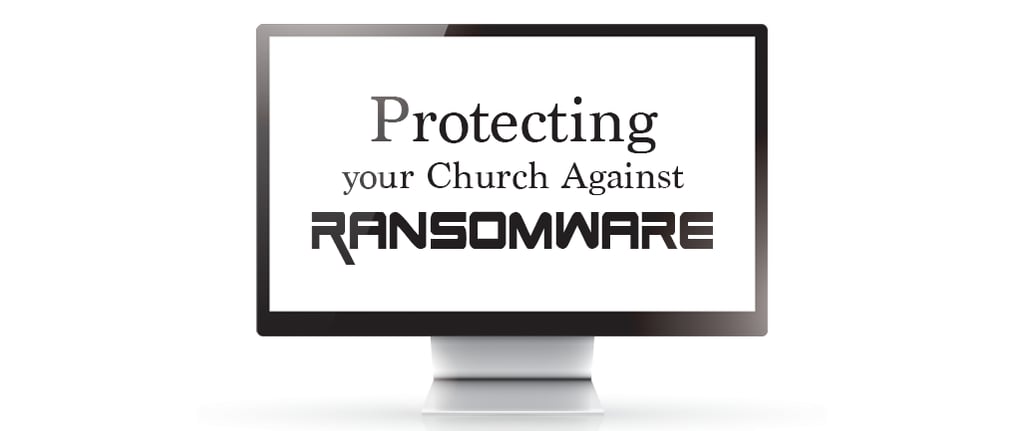
We've recently seen a few stories about ransomware affecting churches. We realize that many of our Shepherd's Staff customers could potentially be infected through a ransomware attack, so we wanted to share a quick overview with you.
On the Concordia Technology Solutions' blog, Technology & Your MInistry, we shared an overview of ransomware and how you can protect your church against getting infected. Here are three specific things you can do to get started.
Use an Up-to-Date Anti-virus Software Package
It can be difficult to protect against the different types of ransomware, but the first defense is to have an antivirus software that is kept up-to-date. There are many different options out there, and many of them are inexpensive or even free.
Microsoft’s antivirus package is called Microsoft Security Essentials, and it is free. Be sure to keep the antivirus software up to date in order to ensure protection from the latest vulnerabilities.
Another precaution to eliminate vulnerabilities is to keep your operating system (such as Microsoft Windows) and any other applications up to date.
Avoid Clicking on Links in Suspicious Emails
Of the ways to infect a computer with malware, one of the most common is infected email links. A user inadvertently infects the computer by clicking on a link in an email.
In most cases, the email comes from an unknown entity who misrepresents him- or herself as another. For example, the criminal might pretend to be a bank, FedEx, Apple, or some other respected organization. This process—when a sender makes it appear as if the email is coming from someone else—is known as “spoofing.” The message states that your account has issues and you need to either click on the link or download a file to fix these issues.
Hovering the mouse pointer over the sender will sometimes reveal the true sender of these type of emails. This is not a foolproof technique, but it is a good first step
Be very careful not to open the suspicious email because that can sometimes launch a malware program. Therefore, if you receive an email that indicates your account will be suspended, has been compromised, or some other scary possibility, think carefully before opening the email.
If you are concerned that the email might be legitimate, a better course of action is to contact the potential sender using information from a trusted source; that is, do not use the contact info provided in the suspicious email. Contact the legitimate company directly to find out if there are any issues rather than take a chance on opening the suspicious message.
Maintain a Current Backup and Store it Off-Site
By creating a backup copy of your database and storing it off-site, you always have a plan in place in the case of a ransomware attack (or natural disaster). Even if every computer on your network becomes infected, having an off-site backup means your church information is safe.
The backup utility is one of the most important utilities in Shepherd’s Staff. When you make a backup, you are in essence making a copy of your database at that moment in time.
- You can access the Backup utility from the Main Menu by clicking Utilities and choosing “Backup.”
- Next you will choose the destination for your backup. If you don’t see the drive where you would like to save the backup, try closing the Backup utility and opening it again.
- Type in any additional information you may have about this backup in the Comment box.
- If you are planning on making changes to the Finance module on an off-site computer and later applying those changes to this computer, you may want to check out Finance. This will turn the Finance module red and will tell other users that any changes they make will be overwritten when the database is restored.
- Clicking the Start button will create a backup of the database. The backup is stored in the root of the directory you choose.
We hope that these tips will help you to keep your Shepherd's Staff data safe and secure. If you would like to learn more about ransomware and how you can protect against it, please check out our e-book titled "Protecting Your Church Against Ransomware."























